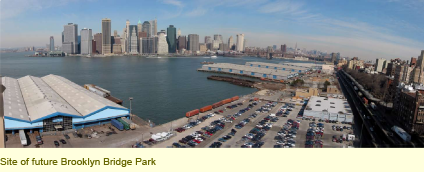Exhibitions
- May 14, 2011-February 15, 2012
Writing the Garden: Books from the Collections of The New York Society Library and Elizabeth Barlow Rogers - May 21-August 29, 2010
Romantic Gardens: Nature, Art, and Landscape Design Rare books from the collections of the Morgan Library and Museum and Elizabeth Barlow Rogers
Lectures and Symposia
- June 2, 2010
How Romantic is Now? Spotlight on Contemporary Landscape Design - May 26, 2010
Great Romantic Landscapes: Central Park and Frederic Church's Olana - January 15, 2008
How Green is My City? New York Today and in 2030 - January-April 2007
Nature and Place: A Series of Conversations with Elizabeth Barlow Rogers - January-April 2006
The American Landscape: Ideals, Influences, Innovations
How Green is My City? New York Today and in 2030
A symposium sponsored by the New-York Historical Society and the Foundation for Landscape Studies
Tuesday, January 15, 2008
 Although New York is known for its urban density, it is an unusually green city thanks to the visionary park builders of the nineteenth century and to the extensive recreational facilities Parks Commissioner Robert Moses bestowed on the city between 1934 and 1968. Steps have been taken in the past to improve the city’s water and air quality. But is New York as green a city as it can and should be? What needs to happen to make it a role model for other cities confronting deteriorating parks and the environmental crisis?
Although New York is known for its urban density, it is an unusually green city thanks to the visionary park builders of the nineteenth century and to the extensive recreational facilities Parks Commissioner Robert Moses bestowed on the city between 1934 and 1968. Steps have been taken in the past to improve the city’s water and air quality. But is New York as green a city as it can and should be? What needs to happen to make it a role model for other cities confronting deteriorating parks and the environmental crisis?
To address these questions, New York City Mayor Michael R. Bloomberg gave an overview of his vision of a greener New York by the year 2030 through initiatives concerning traffic reduction, new energy sources, new parks and housing, and improved water and air quality. Jonathan Rose, a real estate developer with a degree in regional planning, spoke about the green building movement and the benefits of "Smart Growth," which directs development in ways that conserve land and energy consumption. Adrian Benepe, Commissioner, New York City Department of Parks, discussed the Bloomberg administration’s commitment to a renewed and expanded park system and the means necessary to achieve this end. Douglas Blonsky, Central Park administrator and president of the Central Park Conservancy, spoke about the conditions necessary for not-for-profit park organizations to successfully work in partnership with government to achieve practical visions plans and long-term stewardship strategies for urban parks. Rohit Agarwalla from the Mayor’s Office of Operations, one of the principal authors of the 2030 plan for New York City, explained the steps the city and the private sector must take to realize the New York 2030 Plan.

